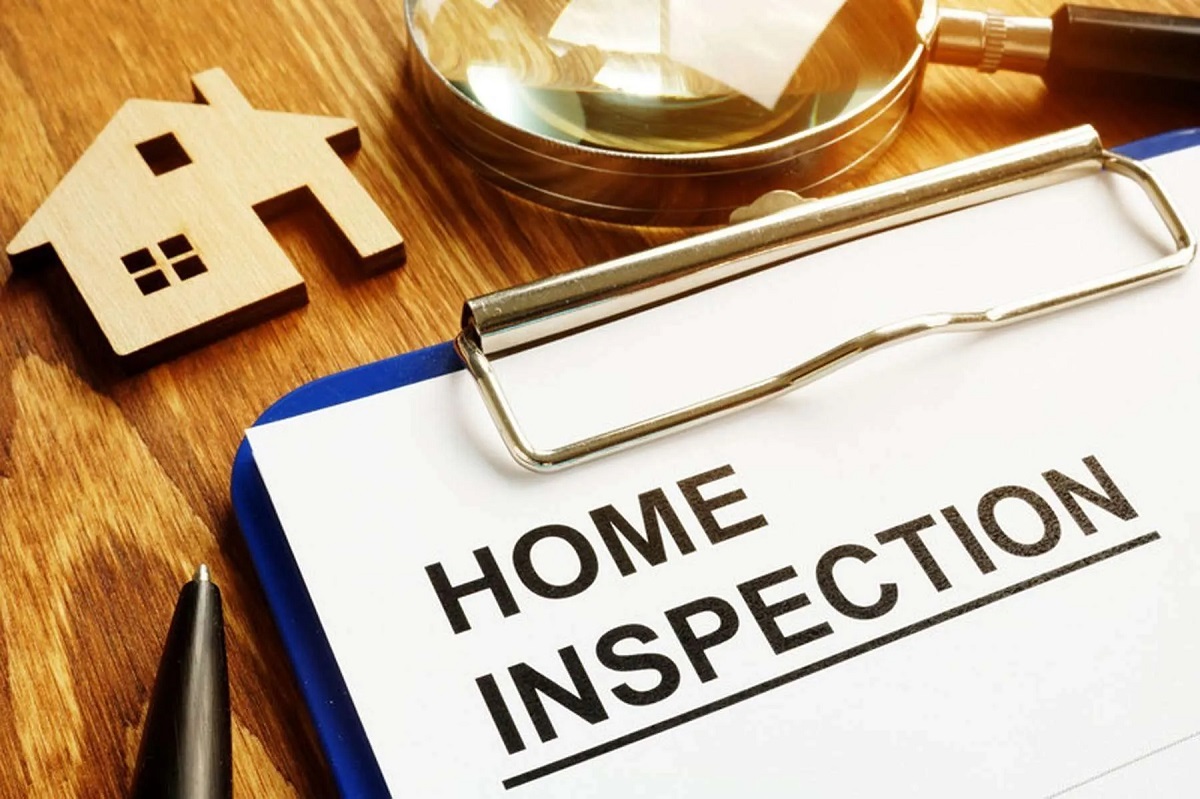Home>Home Maintenance>How A Buyer Can Negotiate After A Home Inspection


Home Maintenance
How A Buyer Can Negotiate After A Home Inspection
Modified: March 6, 2024
Learn how buyers can effectively negotiate their home maintenance concerns after a detailed home inspection. Implement the right strategies for a successful negotiation process.
(Many of the links in this article redirect to a specific reviewed product. Your purchase of these products through affiliate links helps to generate commission for Storables.com, at no extra cost. Learn more)
Introduction
Welcome to the exciting world of home buying! You’ve found a property that checks all the boxes on your dream home list, and you’re ready to make an offer. But before you finalize the purchase, there’s an essential step to navigate: the home inspection.
A home inspection is a crucial part of the home-buying process that provides you with detailed information about the condition of the property. It is typically conducted by a professional inspector who will assess the structural components, electrical systems, plumbing, HVAC, and other aspects of the house.
Once the inspection is complete, you will receive a comprehensive home inspection report. This report will outline any issues or deficiencies that may exist within the property. Armed with this knowledge, you can then decide how to proceed with the purchase.
In this article, we will guide you through the process of negotiating after a home inspection. We will discuss how to review the inspection report, identify major versus minor issues, prioritize repairs and upgrades, gather quotes, negotiate with the seller, request concessions, and ultimately finalize your purchase agreement.
So let’s dive in and explore the art of negotiation after a home inspection to ensure you make the most informed decisions possible and get the best possible deal on your dream home.
Key Takeaways:
- Negotiating after a home inspection involves understanding the report, prioritizing repairs, and requesting seller concessions. It’s a crucial step in ensuring your dream home meets your expectations and is in satisfactory condition.
- By reviewing the inspection report, gathering repair quotes, and negotiating with the seller, you can reach an agreement that satisfies both parties and ensures a smooth closing process. It’s important to communicate effectively and finalize the purchase agreement with the guidance of real estate professionals.
Read more: How To Negotiate After A Home Inspection
Understanding the Home Inspection Process
Before delving into the negotiation process, it’s essential to have a solid understanding of the home inspection process itself. By understanding how inspections work, you can better interpret the inspection report and make informed decisions.
A home inspection is typically conducted by a certified professional who specializes in evaluating the condition of residential properties. The inspector will meticulously assess various aspects of the house, including the structural integrity, electrical systems, plumbing, heating and cooling systems, roof, and more. They will identify any issues, defects, or safety hazards that may exist.
During the inspection, the inspector will use specialized tools and equipment to examine different areas of the house. They will also look for signs of potential problems that may not be evident to the untrained eye.
Once the inspection is complete, the inspector will provide you with a detailed report. This report will outline their findings, including any defects or concerns discovered during the inspection. The report may also include recommendations for repairs or maintenance.
It’s important to note that while a home inspection is thorough, it does not guarantee that every hidden issue will be uncovered. Inspectors can only assess what is visible and accessible at the time of the inspection.
In addition to the home inspection, you may also opt for additional inspections, such as termite inspections, radon testing, or mold assessments, depending on the location and specific concerns about the property.
By understanding the home inspection process, you are better equipped to navigate the negotiation process. The inspection report will serve as your guide for identifying and addressing any issues that may affect the property’s value or your future enjoyment of the home.
Reviewing the Home Inspection Report
Once you receive the home inspection report, it’s time to roll up your sleeves and dive into the details. This report is a valuable resource that provides a comprehensive overview of the condition of the property. By carefully reviewing the report, you can gain a clear understanding of any issues or deficiencies that need to be addressed.
When reviewing the report, pay close attention to the inspector’s comments and recommendations. They will typically categorize the findings into major and minor issues, allowing you to prioritize the necessary repairs and upgrades.
Major issues are typically those that pose significant safety concerns or require immediate attention. These may include structural defects, electrical hazards, plumbing leaks, or HVAC system failures. It’s important to assess the severity and potential cost of addressing these major issues, as they may significantly impact the property’s value.
Minor issues, on the other hand, are typically cosmetic or maintenance-related in nature. These may include small plumbing fixture leaks, worn-out carpeting, or chipped paint. While they may not be as critical as major issues, they should still be considered, as they can add up in terms of time and cost for repairs or upgrades.
As you review the report, take note of any recommended repairs or maintenance tasks. These can range from simple fixes that you can handle yourself to more complex repairs that require professional assistance.
It’s important to keep in mind that no property is perfect, and it’s common to find some issues during a home inspection. Your goal is to assess the overall condition of the property and determine whether you are comfortable proceeding with the purchase given the identified issues.
If there are any areas of the report that you do not understand or require further clarification, don’t hesitate to reach out to the inspector for more information. They will be more than willing to provide additional details and answer any questions you may have.
Once you have thoroughly reviewed the home inspection report, you can move on to the next step: prioritizing repairs and upgrades based on the findings.
Identifying Major vs. Minor Issues
When reviewing a home inspection report, it’s essential to distinguish between major issues and minor issues. This differentiation will help you prioritize repairs and upgrades, as major issues may require immediate attention and potentially have a significant impact on the property’s value.
Major issues are typically those that pose safety concerns, structural defects, or systems failures. These issues can range from foundation problems to electrical hazards, plumbing leaks, HVAC system malfunctions, or roof damage. They are often costly to fix and may require the expertise of professionals to ensure proper resolution.
It is important to carefully assess the severity and potential consequences of these major issues. For example, a cracked foundation can jeopardize the structural integrity of the entire property, while faulty electrical wiring can result in fire hazards. Major issues should be given the highest priority when it comes to negotiation and repair discussions with the seller.
On the other hand, minor issues are typically cosmetic or maintenance-related in nature. Examples of minor issues may include peeling paint, worn-out carpeting, loose tiles, or small plumbing fixture leaks. While these issues may not be critical to the safety or functionality of the property, they should still be considered when estimating repair costs and negotiating with the seller.
It’s important to remember that major and minor classifications can be subjective, and what one person considers a major issue, another may perceive as minor. However, the general guideline is to focus on issues that impact the property’s value, safety, or habitability when categorizing them as major.
As you review the home inspection report, prioritize the major issues and consider their potential impact on the property’s value and your future enjoyment of the home. This will help you determine which repairs and upgrades should be addressed immediately and which can be postponed or addressed at a later time.
By identifying major vs. minor issues, you can enter the negotiation phase with a clear understanding of the repairs and upgrades that are essential for the property’s condition and your peace of mind.
Prioritizing Repairs and Upgrades
Once you have identified major and minor issues from the home inspection report, it’s time to prioritize the repairs and upgrades based on their significance and impact on the property. Prioritization will help you allocate your resources effectively and focus on the most critical items.
Start by reviewing the major issues identified in the report. These are typically the issues that require immediate attention due to safety concerns or significant impact on the property’s functionality. Structural defects, electrical hazards, plumbing leaks, and HVAC system failures often fall into this category.
Decide which of these major issues need to be addressed before moving forward with the purchase. Consider the severity of the problem, the potential cost of repairs, and the potential impact on the property’s value. This will help you determine if you are willing to tackle these repairs yourself or if you need to negotiate with the seller for assistance or a reduction in price.
Next, turn your attention to the minor issues identified in the report. While these may not be as critical as the major issues, they can still add up in terms of time and cost. Evaluate which of these minor issues are important to you and consider their impact on your future enjoyment of the home.
You may prioritize the minor issues based on your personal preferences and budget. Consider the cost of repairs or upgrades for each item and determine if it is something you can handle on your own or if you need to request concessions from the seller.
It’s important to be realistic about what you can afford and the amount of time and effort you are willing to invest in repairs and upgrades. Remember that no property is perfect, and it’s common to find some issues during a home inspection. Focus on addressing the issues that are most important to you and that will have a significant impact on your comfort and satisfaction with the property.
By prioritizing repairs and upgrades, you can approach the negotiation process with clarity and communicate your needs effectively to the seller. This will allow you to pursue a resolution that best meets your expectations while ensuring the property’s condition matches your requirements.
After a home inspection, a buyer can negotiate by focusing on major issues that affect the safety or structural integrity of the home. Prioritize repairs that are costly or urgent, and be open to compromise with the seller.
Gathering Quotes for Repairs
Once you have prioritized the repairs and upgrades that need to be addressed after the home inspection, the next step is to gather quotes from contractors or professionals to get an accurate estimate of the cost involved. This will provide you with valuable information to negotiate with the seller and make informed decisions about the necessary repairs.
Start by identifying the specific repairs or upgrades that require professional assistance. This could include areas such as electrical work, plumbing repairs, HVAC system maintenance, or structural repairs. Determine the scope of the work needed and the qualifications required for the professionals you will be reaching out to.
Reach out to multiple contractors or professionals in each respective field to request quotes for the necessary repairs or upgrades. It’s important to get at least three quotes for each job to ensure that you are getting a fair and competitive price.
Provide each contractor with detailed information about the work that needs to be done, including any specific requirements or considerations. This will help them provide accurate and comparable quotes.
When assessing the quotes, look beyond the cost. Consider the reputation and reliability of the contractor, their experience in handling similar projects, and any additional services or warranties they may offer. Remember, selecting the right contractor is just as important as getting a competitive price.
Take the time to thoroughly review and compare the quotes you receive. Look for any discrepancies in terms of materials, labor costs, and timelines. If something seems unclear or raises questions, don’t hesitate to reach out to the contractor for clarification.
Once you have gathered and reviewed all the quotes, you will have a better understanding of the estimated cost for the necessary repairs. This information will be invaluable during the negotiation process with the seller.
When discussing repairs with the seller, be prepared to present your findings and the quotes you have received. Use the quotes as evidence of the potential costs involved and the need for certain repairs or upgrades. This will strengthen your position when requesting concessions or adjustments to the purchase agreement.
Gathering quotes for repairs allows you to make informed decisions and negotiate effectively with the seller. It ensures that you have a clear understanding of the financial implications of the necessary repairs and helps you determine the feasibility of proceeding with the purchase.
Negotiating with the Seller
After reviewing the home inspection report, prioritizing repairs, and gathering quotes, it’s time to enter into negotiations with the seller. This is a crucial step to address the identified issues and potentially reach an agreement that benefits both parties.
Start by compiling a comprehensive list of the repairs and upgrades you would like the seller to address or provide concessions for. This list should be based on the major issues and any other significant concerns identified during the inspection. Be specific and provide supporting information, such as quotes or estimates, to strengthen your position.
Open the negotiation process by submitting your list of requests to the seller’s agent or directly to the seller, if possible. Clearly communicate your expectations and the reasons behind each request. Be firm but respectful in your approach, understanding that negotiations are a give-and-take process.
Keep in mind that sellers may not be willing to accommodate all of your requests, especially if they believe the property is reasonably priced or if there are multiple offers on the table. However, they may still be open to negotiating on some of the items, particularly if they understand the value and urgency of the repairs.
Be prepared for counteroffers from the seller. They may agree to address some of the repairs, offer a reduction in the price, or provide credits towards closing costs or future repairs. Evaluate each counteroffer carefully and consider whether it aligns with your priorities and financial limitations.
During negotiations, it’s crucial to maintain open lines of communication with the seller or their agent. Promptly respond to any inquiries or counteroffers and be respectful in your communication. Remember, negotiations are a collaborative effort, and a positive working relationship can be beneficial for both parties.
As negotiations progress, keep in mind your ultimate goal – to reach an agreement that allows you to proceed with the purchase while ensuring the property meets your expectations and demands. Be flexible and willing to compromise, but also stand firm on issues that are crucial to your satisfaction and the property’s safety or functionality.
If an agreement is reached, ensure that all terms are properly documented in the purchase agreement and reviewed by both parties. This will provide clarity and legal protection moving forward.
It’s important to approach negotiations with a realistic mindset and ensure that your requests are reasonable and justifiable based on the home inspection report and quotes for repairs. Effective negotiation skills, combined with clear communication, will increase your chances of reaching a mutually beneficial resolution with the seller.
Requesting Seller Concessions
When negotiating after a home inspection, one approach to addressing the necessary repairs and upgrades is to request seller concessions. Seller concessions involve the seller providing financial assistance or making other accommodations to compensate for the identified issues.
Start by carefully reviewing the home inspection report and gathering quotes for the necessary repairs. This will help you determine the estimated costs involved and form the basis of your request for seller concessions.
Compile a list of the repairs or upgrades you believe the seller should address or provide financial assistance for. Be specific in your request, providing clear explanations for each item and supporting documentation, such as quotes or estimates, to justify your claim.
When making your request, focus on the major issues that affect the property’s value, safety, or habitability. These are the areas where you are more likely to receive concessions from the seller. However, be prepared for the possibility that the seller may not agree to all of your requests.
When presenting your request for concessions, be respectful and reasonable in your approach. Clearly explain the reasons behind each request and how addressing the issues will benefit both parties. Emphasize the importance of reaching a fair and mutually beneficial resolution.
It’s also helpful to provide alternatives to the seller. For example, instead of asking for a complete repair, you could propose a reduction in the purchase price to compensate for the repair costs. This can provide more flexibility and options for both parties to reach an agreement.
Be prepared for potential counteroffers from the seller. They may agree to some of your requests while denying others. In such cases, it is important to carefully evaluate the counteroffer and assess if it aligns with your priorities and financial limitations.
Remember that negotiations are a give-and-take process. Be prepared to meet the seller halfway and consider making compromises if necessary. The goal is to reach an agreement that allows you to proceed with the purchase while ensuring the necessary repairs are addressed to your satisfaction.
If an agreement on seller concessions is reached, ensure that all terms are properly documented in the purchase agreement. This will provide clarity and legal protection for both parties involved.
Requesting seller concessions can be an effective way to address the repairs and upgrades identified in the home inspection report. By presenting a reasonable and well-documented request, you increase the chances of finding a resolution that meets your needs while ensuring the property’s condition is satisfactory.
Finalizing the Purchase Agreement
Once you have successfully negotiated the necessary repairs and reached an agreement with the seller, it’s time to finalize the purchase agreement. This is the crucial step where all the terms and conditions are solidified, ensuring a smooth transition towards closing the deal.
Firstly, ensure that all the agreed-upon repairs, seller concessions, and any other negotiated terms are documented accurately in the purchase agreement. Review the document thoroughly to make sure it reflects the mutual understanding between you and the seller.
Consult with your real estate agent or attorney to ensure that all legal aspects of the agreement are properly addressed and compliant with local regulations. They can provide valuable guidance and ensure that your interests are protected throughout the process.
As part of the finalization process, you may need to provide proof of funds or secure mortgage commitments if applicable. This is to demonstrate your ability to fulfill the financial obligations of the purchase agreement.
Consider including contingencies in the purchase agreement to protect yourself in case any unforeseen issues arise. These may include contingencies related to financing, home appraisal, or satisfactory resolution of the repairs identified during the inspection. Contingencies provide you with an exit strategy should the need arise.
Cooperate with your real estate agent or attorney in coordinating any necessary inspections or appraisals required to fulfill the contingencies outlined in the agreement. Timely completion of these tasks is crucial to ensure a smooth closing process.
Review the timeline and deadlines specified in the purchase agreement and make sure you adhere to them. This includes completing any necessary paperwork, providing requested documentation, and ensuring that your financing options are secure.
As part of finalizing the purchase agreement, it’s also recommended to conduct a final walkthrough of the property shortly before closing. This allows you to ensure that the agreed-upon repairs and any other necessary actions have been completed to your satisfaction.
Lastly, communicate and coordinate with all parties involved in the transaction, including sellers, real estate agents, attorneys, and lenders. Maintain open lines of communication and promptly respond to any inquiries or requests to ensure a smooth and timely closing process.
By carefully finalizing the purchase agreement and addressing all necessary steps and requirements, you can move forward with confidence towards the closing date, where the ownership of your dream home becomes a reality.
Conclusion
Negotiating after a home inspection is a critical step in the home buying process. By carefully reviewing the inspection report, identifying major and minor issues, prioritizing repairs, and requesting seller concessions, you can ensure that the property meets your expectations and address any potential concerns.
Understanding the home inspection process empowers you to make informed decisions and effectively navigate the negotiation process. By gathering quotes for repairs and upgrades, you gain a clear understanding of the costs involved, allowing you to present a well-supported case to the seller.
Negotiating with the seller requires good communication, a clear understanding of your priorities, and the willingness to find a mutually beneficial resolution. By presenting your requests for repairs or concessions in a respectful and reasonable manner, you increase the likelihood of reaching an agreement that satisfies both parties.
Once negotiations are finalized, it is important to carefully review and finalize the purchase agreement, ensuring that all terms and conditions are accurately recorded. This document serves as a legal contract and provides the framework for a successful closing.
Throughout the process, rely on the expertise of your real estate agent or attorney to guide you and protect your interests. Their knowledge and experience can prove invaluable in navigating negotiations and finalizing the purchase agreement.
In conclusion, negotiating after a home inspection is a crucial step in ensuring that the property you are purchasing meets your expectations and is in a satisfactory condition. By understanding the process, prioritizing repairs, requesting seller concessions, and finalizing the purchase agreement, you can confidently move forward in your home buying journey.
Remember, a successful negotiation is one that addresses your concerns while maintaining a fair and cooperative relationship with the seller. With proper preparation and effective communication, you can reach an agreement that allows you to move into your dream home with confidence and peace of mind.
Frequently Asked Questions about How A Buyer Can Negotiate After A Home Inspection
Was this page helpful?
At Storables.com, we guarantee accurate and reliable information. Our content, validated by Expert Board Contributors, is crafted following stringent Editorial Policies. We're committed to providing you with well-researched, expert-backed insights for all your informational needs.














0 thoughts on “How A Buyer Can Negotiate After A Home Inspection”